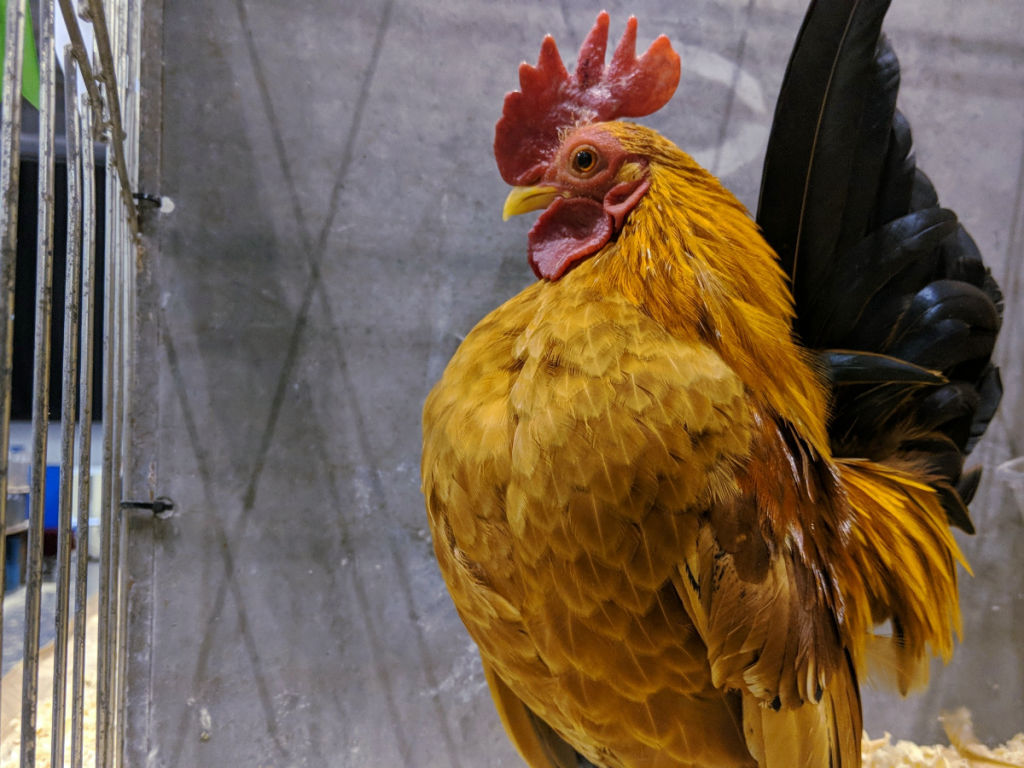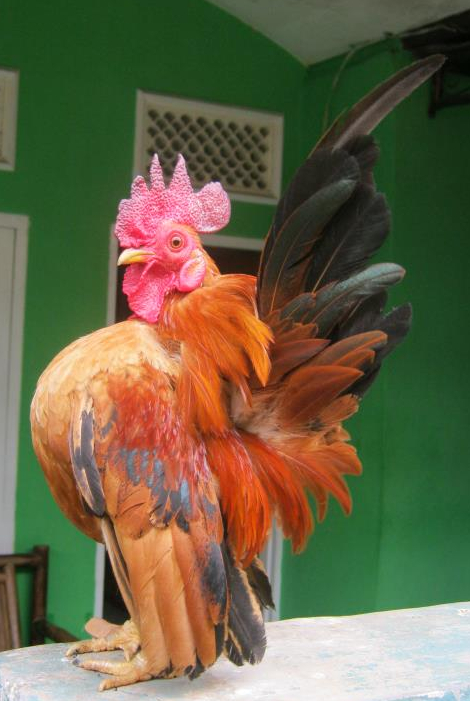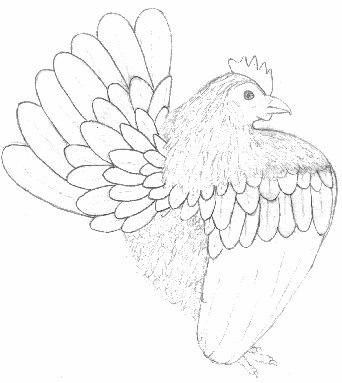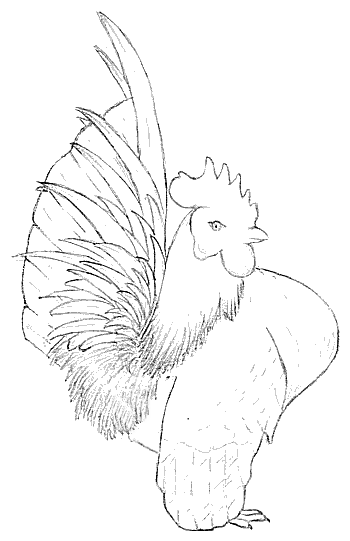Raising Serama bantams.

Raising Malaysian Serama bantams:
The Malaysian Serama Bantam is the smallest and lightest bantam chicken in the world and often described as a living work of art. They are no more difficult to raise then most other chickens, in some respects they are easier, as they require less feed and smaller housing than most.
Below: A Serama bantam.

See a gallery with more pictures and images of Serama bantams.
In Malaysia and other eastern countries the popularity of the Malaysian Serama Bantam is mostly due to its physical beauty and the small size making them suitable for keeping even in urban areas.
Below: The classic Serama Profile for the hen.

Serama are very small with weight limits on the showing classes and breeding is still going on to make them ever smaller. I have seen a hen weight in at 160 grams and a cockerel at 195.
Below: The Cockerel in profile.

The Serama Bantam make beautiful pets sometimes kept indoors as well outdoors. As they are so small in size they require very little space and a pair or trio can be kept in quite a small area. Malaysian Serama Bantams should only be let out of their cages when they are safe from all predators such as dogs, cats and birds of prey.
Serama will usually let you know by making a distress call when an unfamiliar animal or object is sighted and are safe on their own as long as there are people within earshot who can recognise when they are under threat.
Serama make great companions in the garden and are sociable birds happy with human company.
They are inexpensive to rear as each Serama consumes around one pound of feed per month. As a domesticated and naturally breeding pet, the Serama is a great substitute for wild caught pets, especially wild caught birds.
Raising Serama tips:
1. Serama should be protected from cold temperatures as they are small and originate in warm climates. They prefer the average temperature to be around 90 Fahrenheit and must be kept at temperatures above 40 degrees Fahrenheit. Below this they will need supplemental warmth. This can simply be done by hanging a 60 watt light bulb about 6 inches above there heads, in the cage or place of housing, keeping them in the home as house pets or in a heated building.
See more about housing Serama.
2. Serama make excellent pets. The crow of the rooster is not at all loud and they are very people friendly. Serama as pets.
3. Serama will eat regular chicken feed as long as you use bantam or small sized pellets. I use a mixture of poultry breeder feed which is available in small sized pellets and a small amount mixed grains. A constant supply of clean water must be provided.
Feeding and watering Serama.
4. Serama were not selected for colour, so they don't always breed true to colour. It is usual to hatch, as many different coloured chicks as eggs that hatch, there have been over 2500 different colours documented in Malaysia.
5. Serama can be quite productive as chickens and will lay most of the year if kept in the right conditions. Egg production and fertility peak in the Spring months and the egg colour ranges from white to deep brown.
6. Serama can be very good mothers, and are very capable of sitting on, hatching, brooding and looking after their own chicks. See incubating and hatching of Serama eggs.
7. Serama love to be outside during warm sunny days to forage and pick amongst the grass, but whilst out they must be protected as there small size makes them easy prey to cats, dogs, birds of prey and other predators.
8. Serama chicks are very small when hatched and for the first 3 weeks, chick crumb will need to be ground to a powder to help digestion, this is easily done in a coffee grinder or similar machine, or with a mortar & pestle.
9. The Serama carry a 'diluted' lethal gene from the Japanese Bantam Ancestry, causing 1% to 2 % of embryos to develop fully, but fail to hatch or the chick dies within 24 hours of hatching. The Incubation period for Serama eggs is 19-20 days. At the normal incubation temperature of most breeds of poultry. See Breeding Serama.
10. Serama don't always breed true to size, so out of a batch of chicks, expect a few % to be very small (A class), 10 % or so to be large (C class) and the remainder to be within the normal size range for Serama.
